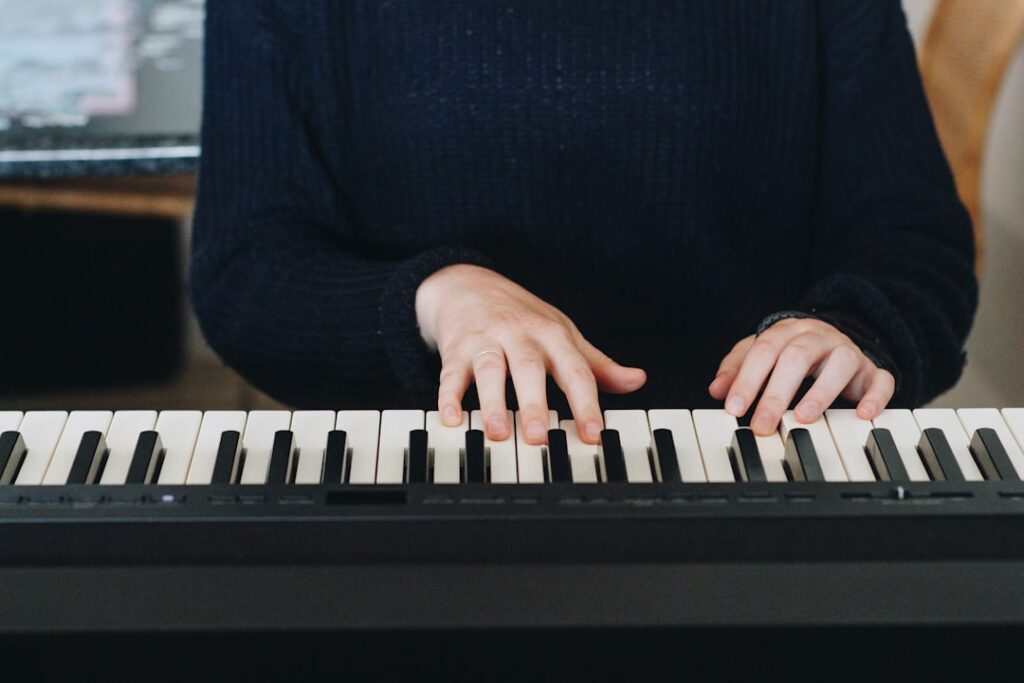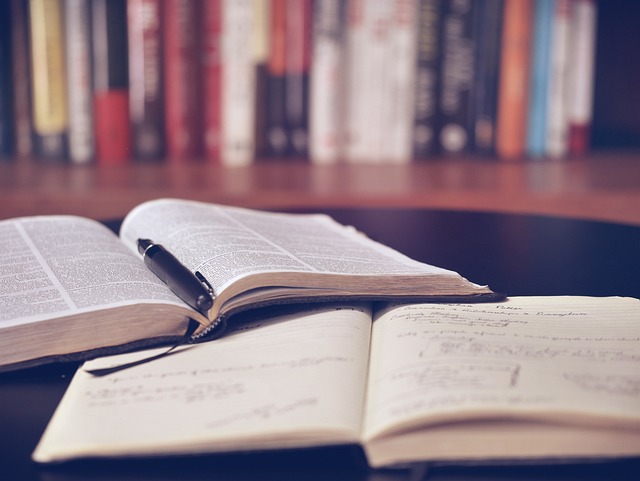
Discover essential special needs music resources and inclusive strategies to make music theory accessible for all learners. Expert tips for educators supporting diverse students in music education.
Music theory has long been considered a cornerstone of musical education, yet traditional teaching methods often create unnecessary barriers for learners with diverse needs. When we talk about special needs music resources, we’re not just discussing accommodations—we’re exploring how to transform music education into a truly inclusive experience that celebrates every learner’s unique way of understanding and processing musical concepts.
Outline: Special Needs Music Resources
Breaking Down Traditional Barriers in Music Theory Education
Adapting Visuals, Language, and Materials for Diverse Learners
Embracing Multisensory Learning: Visual, Auditory, and Kinesthetic Approaches
Tools and Technologies for Inclusive Music Education
Customizable Resources: The MusePrep Approach
The beauty of music lies in its universal language, but unfortunately, the way we teach music theory hasn’t always reflected this universality. Students with learning differences, sensory processing challenges, autism spectrum disorders, ADHD, and other special needs often find themselves struggling not with the music itself, but with the rigid, one-size-fits-all approach that dominates many classrooms.
Breaking Down Traditional Barriers in Music Theory Education
Traditional music theory instruction typically relies heavily on visual notation, abstract concepts, and standardized progression through predetermined skills. While this approach works for some learners, it creates significant obstacles for many others. Students with dyslexia may struggle with reading traditional notation, while those with attention differences might find it challenging to focus during lengthy theoretical explanations. Learners on the autism spectrum might need more concrete, systematic approaches to understanding abstract musical relationships.
The most common barriers include an overreliance on visual-only learning materials, complex terminology introduced without scaffolding, rigid pacing that doesn’t account for different processing speeds, and limited connection between theoretical concepts and practical musical experiences. Additionally, many traditional approaches fail to recognize that learners with special needs often have exceptional musical intuition and creativity that can be overshadowed by struggles with conventional presentation methods.
These barriers aren’t just inconvenient—they can be genuinely exclusionary, preventing talented and passionate students from accessing the joy and understanding that music theory can provide. When we fail to adapt our teaching methods, we risk losing the unique perspectives and contributions that neurodiverse learners bring to musical communities.
Adapting Visuals, Language, and Materials for Diverse Learners
Creating inclusive music education begins with reimagining how we present information. Visual adaptations might include using color-coding systems to represent different musical elements, incorporating larger fonts and clear spacing for students with visual processing differences, or creating tactile notation systems for learners who benefit from hands-on exploration.
Language adaptation is equally crucial. Instead of immediately introducing complex terminology, effective special needs music resources break down concepts into digestible pieces, use concrete analogies that relate to students’ lived experiences, and provide multiple ways to express the same musical idea. For instance, rather than simply defining “intervals” in abstract terms, we might describe them as the “distance between musical friends” or use visual metaphors like ladders or bridges.
Material adaptation involves creating flexible resources that can be customized for individual learning needs. This might mean developing worksheets with adjustable difficulty levels, providing both visual and auditory versions of the same content, or creating interactive materials that allow students to manipulate musical elements directly. The goal is to ensure that every student can access the same rich musical concepts through their preferred learning modalities.
Embracing Multisensory Learning: Visual, Auditory, and Kinesthetic Approaches
The most effective accessible music theory instruction engages multiple senses simultaneously. Visual learners might benefit from color-coded staff systems, graphic organizers that show relationships between chords, or animated presentations that demonstrate how melodies move through space. Charts showing interval patterns, chord progressions mapped as visual journeys, and notation that uses different colors for different voices can transform abstract concepts into concrete, understandable information.
Auditory learners, often natural musicians, need opportunities to hear concepts as they learn them. This means playing examples immediately after explaining theoretical concepts, using vocal exercises to internalize interval relationships, and encouraging students to create their own musical examples. Singing scale patterns, clapping rhythmic relationships, and using voice to demonstrate harmonic progressions can make theoretical concepts feel natural and intuitive.
Kinesthetic learners require movement and physical engagement to truly understand musical concepts. This might involve using hand signs for intervals, creating body percussion patterns that demonstrate rhythmic relationships, or using manipulative objects to represent musical elements. Students might arrange physical cards to build chords, use their bodies to show melodic contour, or create movements that reflect different musical forms.
The magic happens when these approaches are combined. A lesson on chord progressions might involve seeing the chords notated in color-coded systems, hearing them played in various styles, and physically arranging chord cards while moving to demonstrate the harmonic rhythm. This multisensory approach ensures that students with different learning preferences can access the same concepts through their strongest modalities while also developing skills in other areas.
Tools and Technologies for Inclusive Music Education
Modern technology offers unprecedented opportunities to create special needs music resources that adapt to individual learners. Digital platforms can provide immediate feedback, adjust difficulty levels automatically, and present information in multiple formats simultaneously. Apps that allow students to compose by touching and dragging notes, software that provides visual representations of sound waves, and programs that can slow down or speed up musical examples all contribute to more inclusive learning environments.
Interactive whiteboards, tablets with music creation apps, and specialized software for students with motor difficulties can remove physical barriers to musical expression. Voice recognition software can help students with writing challenges input their musical ideas, while screen readers can make digital music resources accessible to students with visual impairments.
However, technology should complement, not replace, human connection and creativity. The most effective tools are those that enhance the teacher-student relationship and provide new ways for students to express their musical understanding, rather than simply digitizing traditional approaches.
Customizable Resources: The MusePrep Approach
Effective inclusive music education requires resources that can be tailored to individual needs without losing their educational integrity. Customizable worksheets and activities allow teachers to adjust complexity, modify presentation formats, and provide multiple entry points for the same learning objectives. This might mean offering the same chord progression exercise in traditional notation, number systems, and color-coded formats, allowing students to choose the approach that works best for them.
The key is creating materials that maintain high educational standards while providing maximum flexibility. Students working on interval recognition might use matching games, listening exercises, or physical manipulation activities, all targeting the same learning goal through different pathways. This approach ensures that accommodations enhance rather than dilute the educational experience.
Building Inclusive Music Communities
Creating truly accessible music theory education extends beyond individual accommodations to fostering inclusive communities where all learners feel valued and supported. This means celebrating different ways of musical understanding, encouraging peer collaboration that leverages diverse strengths, and creating performance opportunities that showcase various forms of musical expression.
Teachers play a crucial role in modeling inclusive attitudes and helping all students understand that musical intelligence comes in many forms. When neurotypical students see their peers with special needs succeeding through adapted approaches, they often develop more creative and flexible thinking about music themselves.
Assessment and Progress Monitoring in Inclusive Settings
Traditional assessment methods may not accurately reflect the musical understanding of students with special needs. Special needs music resources should include varied assessment approaches that allow students to demonstrate their knowledge through multiple modalities. This might include performance-based assessments, portfolio collections, verbal explanations, or creative projects that show theoretical understanding through composition or arrangement.
Progress monitoring should focus on individual growth rather than comparison to standardized benchmarks. Students should be encouraged to set personal goals, track their own progress, and celebrate achievements that reflect their unique learning journeys. Regular check-ins and flexible pacing ensure that all students can experience success and continued growth.
The Future of Inclusive Music Education
As our understanding of neurodiversity and learning differences continues to evolve, inclusive music education practices must continue to adapt and improve. This means staying current with research on learning differences, incorporating new technologies thoughtfully, and always prioritizing the individual needs and strengths of each student.
The goal isn’t to make music theory easier, but to make it more accessible. When we remove unnecessary barriers and provide multiple pathways to understanding, we often discover that students with special needs bring unique insights and creative approaches that enrich the entire learning community.
Music theory, at its core, is about understanding the language of music—a language that transcends traditional communication barriers and speaks directly to the human experience. By making this language accessible to all learners, we’re not just teaching musical concepts; we’re opening doors to lifelong musical joy, creative expression, and meaningful connection.
The journey toward truly inclusive music education requires ongoing commitment, creativity, and collaboration. But the rewards—seeing every student discover their musical voice and develop deep understanding of the art form they love—make every adaptation and innovation worthwhile. When we provide appropriate special needs music resources and embrace diverse learning approaches, we create space for all students to thrive as musicians, theorists, and creative individuals.
Through inclusive practices, adaptive materials, and genuine commitment to meeting every learner where they are, music theory education can become what it was always meant to be: a pathway to deeper musical understanding that welcomes and celebrates every student’s unique journey toward musical fluency and creative expression.
If You Want To Dive Deeper:
Enjoyed learning about special needs music resources?
Subscribe to our channel so you never miss a new lesson!
Are there any new words that you learned today?
Tell us in the comments – we’d love to hear from you!
Related Posts:
From Reading Notes to Hearing Them: Building Inner Hearing in Young Musicians
Beginner Music Composition: How to Compose Your First Melody
Understanding Accidentals Music Theory: Your Complete Guide to Sharps and
Enhancing Music Skills With Half Steps: Introduction for Beginners
Learn to Read Notes: Mastering Pitches in Treble and Bass Clef – MusePrep
Musical Notation Basics: Understanding Natural Tones and Clefs
The Core Music Theory Basics Every Student Should Understand
Pin for Later:

